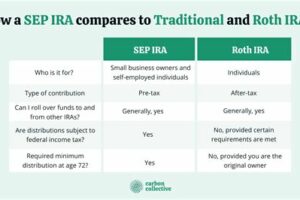Find out which states in the US have a high percentage of tenant-operated farms with our latest research. Discover the top regions for tenant farming.
As the United States experienced significant agricultural changes during the early 20th century, an interesting trend emerged in certain regions. It was discovered that some states had a particularly high percentage of tenant-operated farms, which indicated a unique dynamic within their agricultural industry. This phenomenon raises questions about the reasons behind such high numbers of tenant farmers and the impact it had on the overall economy and society of those states. Consequently, exploring this trend in greater detail can offer valuable insights into the history of American agriculture.
Tenant farming was a common practice in many states across the United States during the early 20th century. However, some states had a higher percentage of tenant-operated farms than others. Let’s take a closer look at which states had a high percentage of tenant-operated farms.
The Land of Enchantment, also known as New Mexico, experienced a tenant farming boom during the early 1900s. This was due to the Homestead Act of 1862, which allowed settlers to claim up to 160 acres of land. However, much of this land was not suitable for farming, and many families turned to renting land from large landowners. As a result, tenant farming became a prevalent practice in New Mexico.
The Lone Star State, Texas, was also home to a significant number of tenant farmers. Many of these farmers were migrant workers who traveled from state to state looking for work on farms. The tenant farming industry in Texas was fueled by the demand for cotton, which was a major cash crop at the time. However, tenant farmers often faced poor working conditions and low wages.
The Peach State, Georgia, has a long history of tenant farming. During the late 1800s and early 1900s, many African American families were forced into sharecropping, a form of tenant farming in which the farmer paid rent with a share of their crop. This system often resulted in debt and poverty for the tenant farmers.
Land of Opportunity, Arkansas, was home to many tenant farmers who worked along Highway 61 in the Mississippi River Delta region. The fertile land in this area made it an ideal location for growing cotton, and many large landowners took advantage of this by renting out their land to tenant farmers. However, these farmers often faced discrimination and mistreatment from their landlords.
The Bluegrass State, Kentucky, had a sharecropping system that was similar to Georgia’s. Many tenant farmers in Kentucky were African American and were forced to work long hours for low wages. This system persisted well into the 20th century, and it wasn’t until the Civil Rights Movement that tenant farmers began to see improvements in their working conditions.
The Evergreen State, Washington, had a large population of immigrant farm workers who often worked as tenants on farms. These workers were primarily of Mexican descent and faced discrimination and poor working conditions. However, they played a critical role in the state’s agricultural industry and contributed significantly to the economy.
The Palmetto State, South Carolina, has a history of sharecropping that dates back to the Reconstruction era. During this time, many African Americans were promised land and freedom in exchange for their labor. However, this promise was often unfulfilled, and many were forced to work as sharecroppers for generations.
The Centennial State, Colorado, was home to many tenant farmers during the Dust Bowl era of the 1930s. The drought and economic depression during this time led many farmers to abandon their land and seek work elsewhere. However, some farmers stayed behind and continued to work as tenants on other people’s land.
The Volunteer State, Tennessee, was once known as the Cotton Kingdom due to the high demand for cotton during the early 1900s. Many tenant farmers in Tennessee worked long hours in the fields and faced poor living conditions. However, they played a critical role in the state’s agricultural industry and helped to drive its economy.
The Granite State, New Hampshire, had a unique connection to tenant agriculture in the early 20th century. Many families from Quebec, Canada, migrated to New Hampshire to work as tenant farmers. They often rented small plots of land and grew crops such as potatoes and vegetables. While this system was not as prevalent in New Hampshire as it was in other states, it still played a significant role in the state’s agricultural history.
Overall, many states across the United States had a high percentage of tenant-operated farms during the early 20th century. While this system provided work for many families, it often resulted in poor working conditions, low wages, and debt. Today, tenant farming is less common, but its legacy can still be seen in the agricultural industry of many states.
Once upon a time, there were many states in the United States where tenant-operated farms were prevalent. These farms were run by tenants who leased land from landlords. The percentage of tenant-operated farms varied across different states, with some having higher percentages than others.
From the mid-1800s to the early 1900s, tenant farming was common in the southern states, particularly in areas where cash crops such as cotton and tobacco were grown. According to historical records, the following states had a high percentage of tenant-operated farms:
- Mississippi – In 1920, 72% of Mississippi’s farms were operated by tenants.
- Georgia – In 1920, 64% of Georgia’s farms were operated by tenants.
- South Carolina – In 1920, 62% of South Carolina’s farms were operated by tenants.
- Alabama – In 1920, 56% of Alabama’s farms were operated by tenants.
- Tennessee – In 1920, 50% of Tennessee’s farms were operated by tenants.
These states had high percentages of tenant-operated farms for various reasons, including the legacy of slavery, which had left many African Americans without land ownership. Tenant farming allowed them to work the land and earn a living, albeit under difficult conditions.
The point of view on the prevalence of tenant-operated farms varies. Some see it as a necessary means of survival for many families during a difficult time in history, while others view it as a form of exploitation by landlords who profited from the labor of others.
Regardless of one’s perspective, the fact remains that tenant-operated farms played a significant role in the agricultural history of many states, and their legacy can still be seen today in the landscapes and communities they helped shape.
Thank you for reading about the states that had a high percentage of tenant-operated farms. It is fascinating to see the different regions where tenant farming was prevalent and how it impacted the agricultural industry. As we reflect on this topic, it is important to remember the challenges that tenant farmers faced and the contributions they made to American agriculture.In the early 20th century, tenant farming was a common practice in the southern states, particularly in Mississippi, Louisiana, and Arkansas. These states had a high percentage of tenant-operated farms due to the history of sharecropping and the lack of land ownership by African Americans. Despite the hardships that came with being a tenant farmer, many families were able to make a living off the land and provide for their loved ones.As we move forward, it is essential to recognize the legacy of tenant farmers and the impact they have had on American agriculture. Today, we have access to more resources and support systems that can help small farmers succeed. However, the fight for equal access to land ownership and fair treatment in the agricultural industry continues.In conclusion, we hope that this article has shed some light on the states that had a high percentage of tenant-operated farms and the challenges that came with this way of life. We encourage you to continue learning about the history of American agriculture and the people who have shaped it. Thank you for visiting our blog, and we hope to see you again soon!.
People often ask about which states have a high percentage of tenant-operated farms. Here are some of the most common questions and their answers:
What is a tenant-operated farm?
A tenant-operated farm is a farm that is rented or leased by someone who operates the farm but does not own the land.
Which states have the highest percentage of tenant-operated farms?
According to the 2017 Census of Agriculture, the top five states with the highest percentage of tenant-operated farms are:
- Iowa – 37.4%
- Nebraska – 33.8%
- Kansas – 33.4%
- Minnesota – 31.9%
- North Dakota – 31.6%
Why do some states have a higher percentage of tenant-operated farms than others?
The percentage of tenant-operated farms can vary depending on factors such as land availability, land prices, and the types of crops grown in a particular area. States with a greater amount of cropland and higher land prices may have a higher percentage of tenant-operated farms than those with lower land prices.
In conclusion, Iowa, Nebraska, Kansas, Minnesota, and North Dakota are the states with the highest percentage of tenant-operated farms. This information can be useful for those interested in agricultural trends and the state of farming in different regions of the United States.






